Category — Features
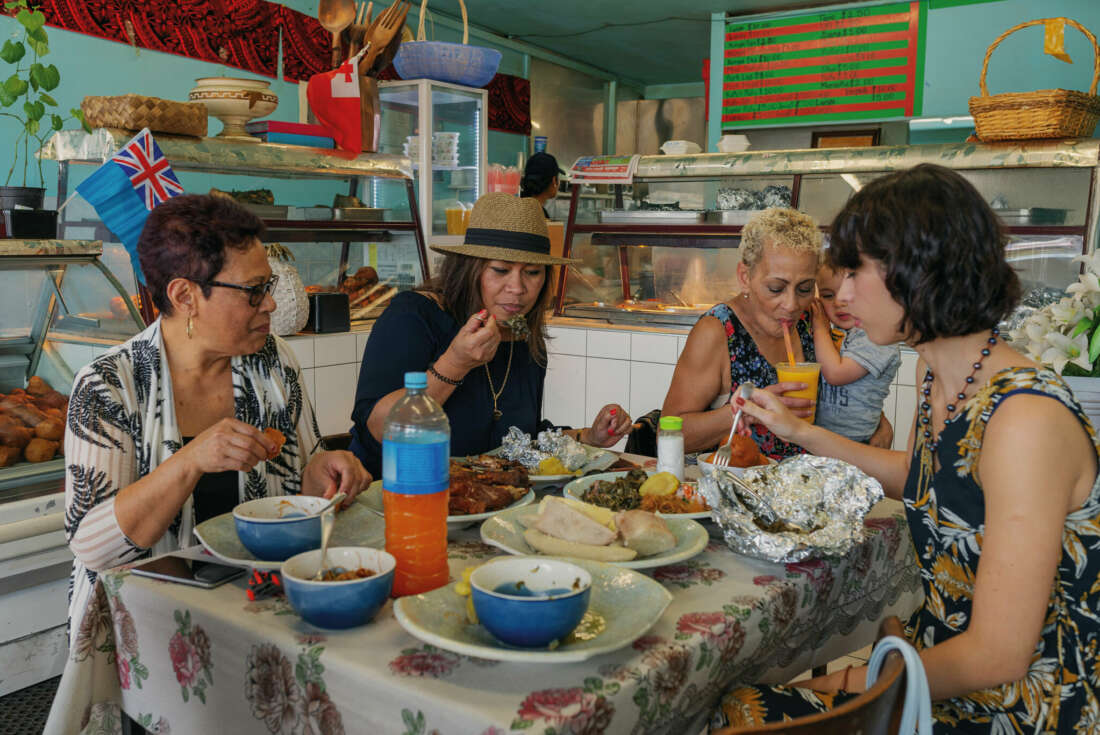
Real Tongan
I wrote this story well over a year ago now, very slowly, over a period of months. It was hard to write for a number of reasons; guilt over knowing more about French culture than my own, being uncomfortable in sharing a personal story, and wanting to do justice to a topic so dear to my heart.
It sat waiting, but with themes of generosity/relationships and reciprocity/whanaungatanga being central to this issue of Stone Soup, it felt like the time was right because these values are central to ‘anga fakatonga’ – the Tongan way. Something that I thought I had to relearn but in fact found I had in me all along, and have begun to proudly claim in my own way. So I’ve left this story as it was originally written: a snapshot of my little journey at the time.
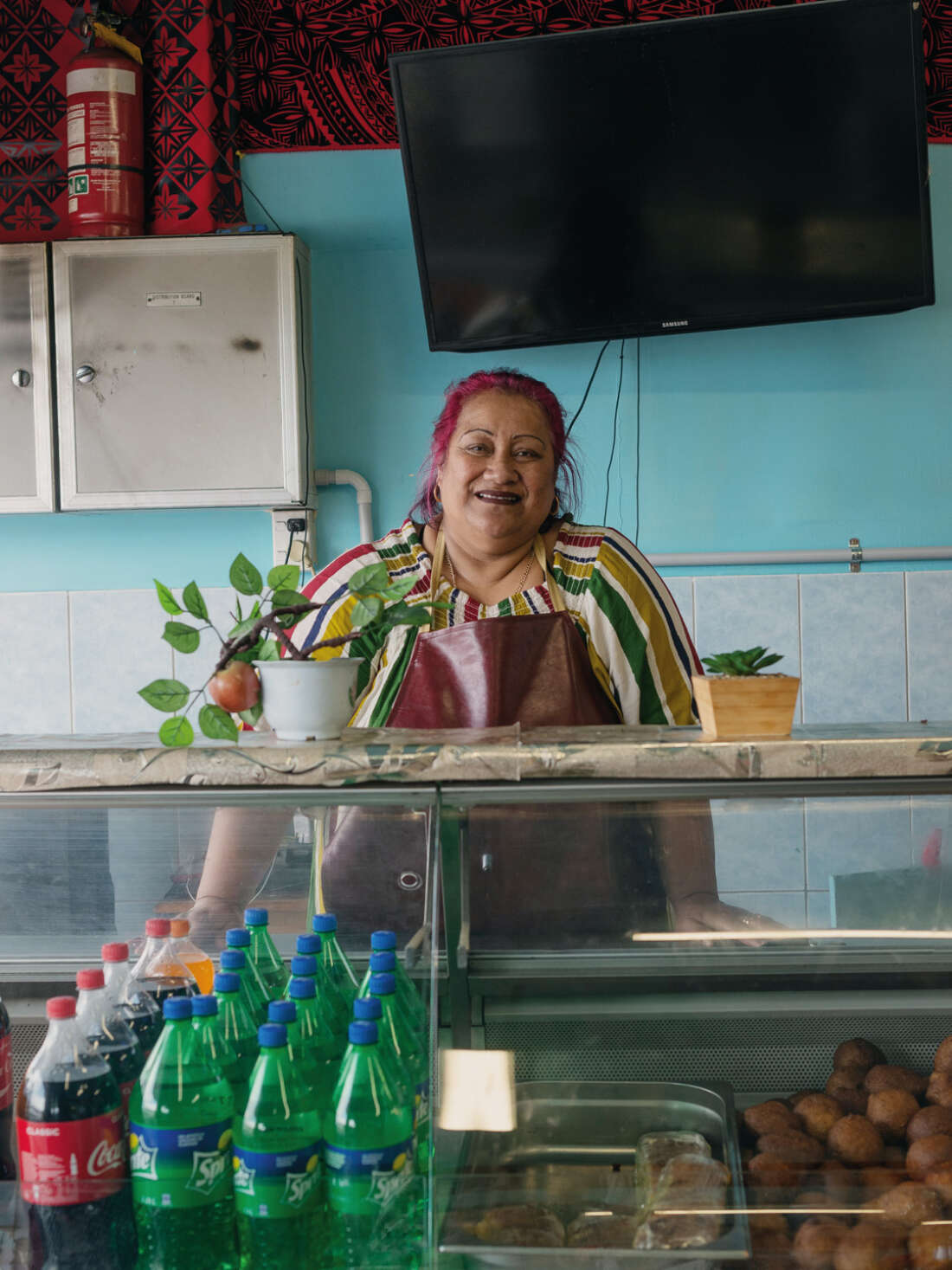
As a half-Tongan raised in Auckland I’m lucky that I got to grow up embedded with the Tongan side of my family, living with my grandma and aunty, just down the road from my other aunties; afternoons were spent roaming the neighbourhood in Balmoral with my cousins, often up to mischief. Much of what I learned about Tongan culture was through intuition and being around family. Going to the Tongan church on Dominion Road, Sunday feasts, long funerals and reading my grandma the Tongan newspaper were all part of an upbringing that was conversely very anglo from my dad’s side. I often felt clueless next to my full-Tongan cousins, they all knew the customs, the language, the food. I wasn’t a ‘real’ Tongan, but I wasn’t a ‘real’ Palangi either; a frustration that I’m sure many people of mixed race and nationality can identify with growing up, then a positive point to remark on later in life. One day as a young girl, my older cousin was cooking a pot of ‘green bananas’ (hopa or plantain) at home, which I had never tasted and was very curious about. I was unimpressed to find that the flavour was closer to potato then the sweet banana I was expecting; feigning enjoyment however, I ate the whole thing to avoid being called out. My parents owned an Italian restaurant and my palate, overstimulated by mounds of pasta and pizza, was not a fan of the subtleties nor texture of this grey, starchy staple. Still, there was plenty of other great stuff I did savour: watermelon otai – a crushed watermelon drink, ota ika- raw fish marinated in coconut milk and lime juice, lu sipi – lamb cooked in taro leaves with coconut cream, and chop suey, which of course isn’t Tongan at all, but a much loved cultural import to the islands by Chinese immigrants. Back home from five years in France and a self-professed, for lack of a better term, ‘foodie’, I felt a longing to reconnect with this Tongan food and ultimately to my roots.
One Sunday, I group my mum and her sisters together and take them out for lunch to Pepe Lavinia Veiongo Take Away, a Tongan food joint in Otahuhu, South Auckland. My aunty reckons it’s the best Tongan cooking in Auckland and the perfect setting to coax out some stories from this noisy bunch of ladies through eating and talking about our food. Food is central to an understanding of Tongan culture and is loaded with meaning: a focal point of socialisation, a sign of status, and a connection to land and indigenous knowledge. For Pacific islanders, food is about community, and good hospitality is simply ingrained in the culture. We love to share! As we sit down in the small dining room, I ask my family how they used to prepare and eat food growing up.
Mum recalls, “on Saturdays we would go to the plantation on horse-drawn carriage, the women and kids would pile on and the men would walk the horses. The whole day would be spent on the plantation, restocking, or pulling plants to store for the week ahead – taro and taro leaves, tapioca, hopa, pawpaw, yams, kumara, coconuts…”. This is the original Tongan pantry, traditionally harvested from organic, family-owned plantations. I almost couldn’t imagine this happening, my mum is no green-finger, in fact the idea of it fascinated me – how did I not know this?
Next the family would bring the food home to prepare; ready for Sunday’s feast after church. “Everyone in the family takes part in the cooking,” she continues “that food is not just for the family, the first thing you do is share a plate to the neighbours. We exchange – they bring their food and we bring our food. It’s just being neighbourly for the Sunday, there’s no expectation to receive, it’s all about sharing what you’ve got and the door should always remain open when eating so anyone can come in and join. And that still happens in Tonga today.”
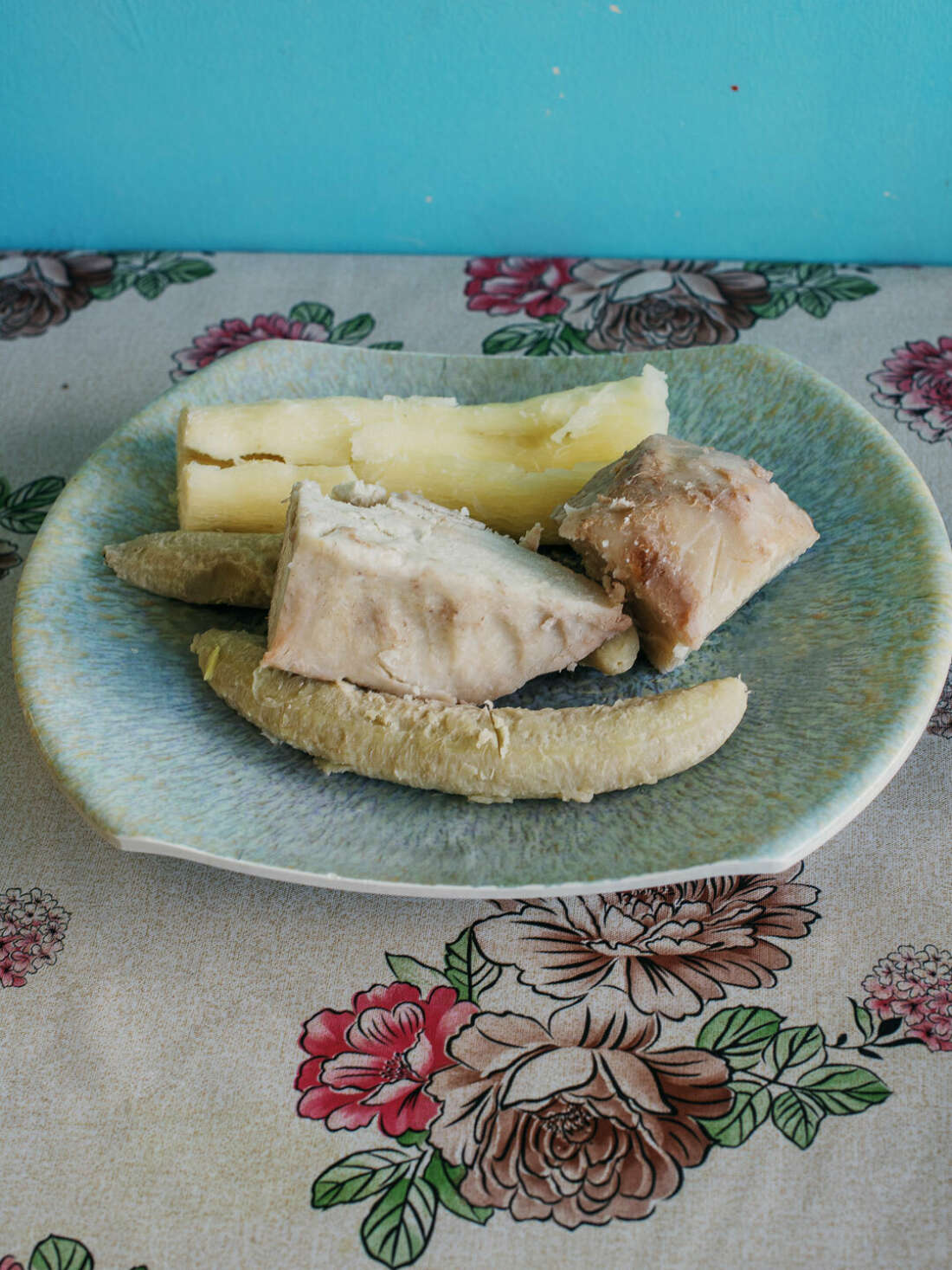
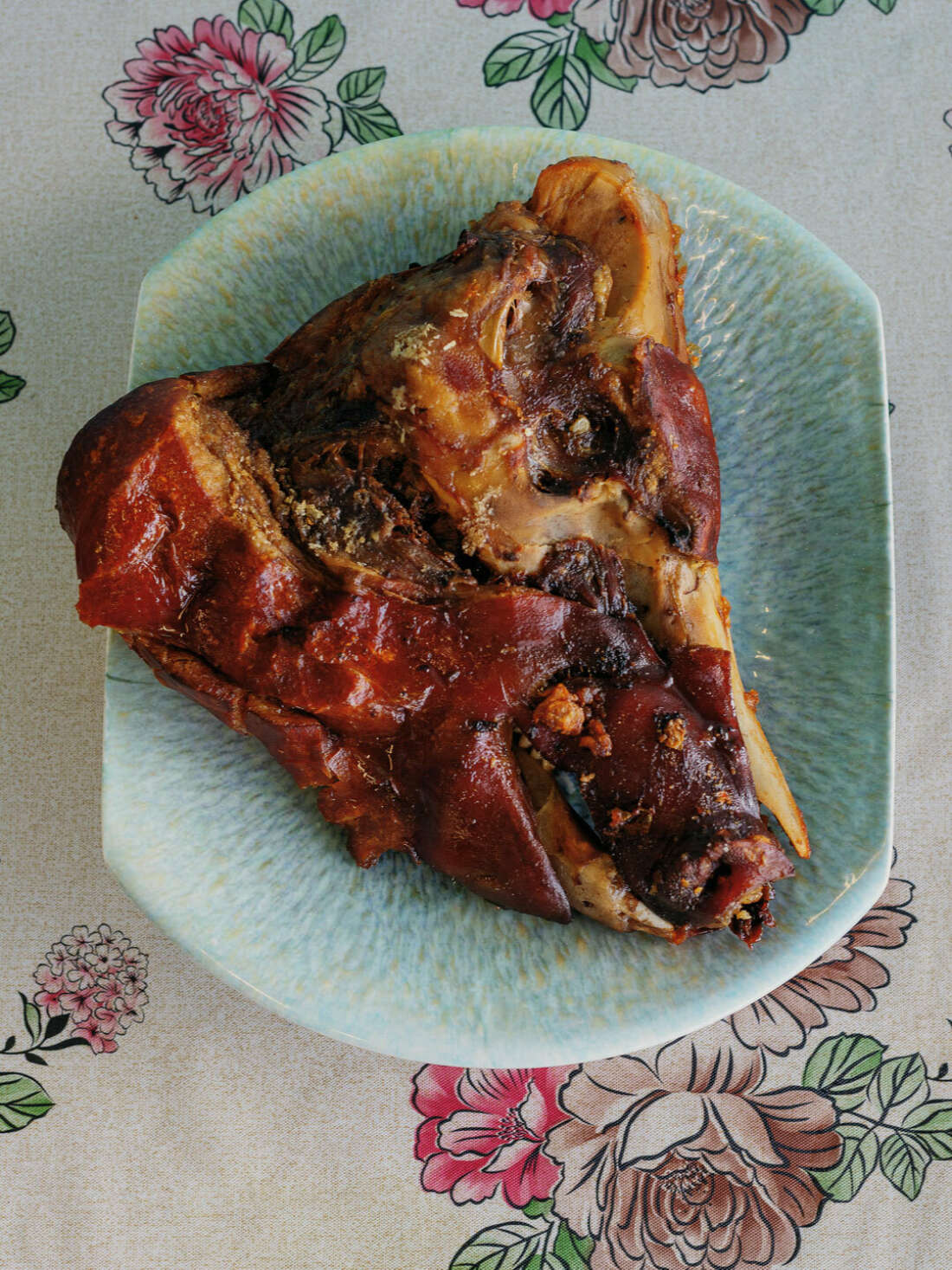
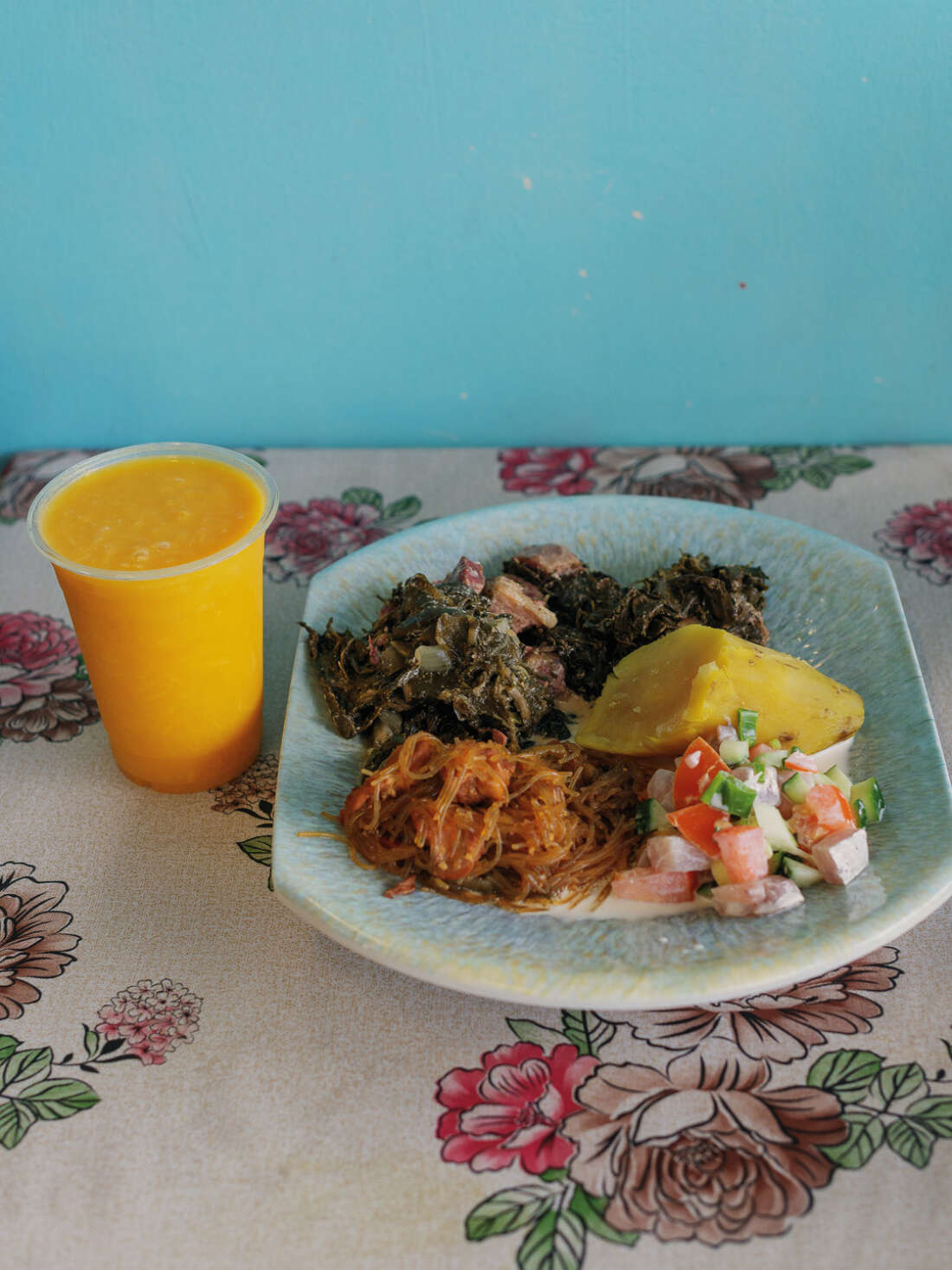
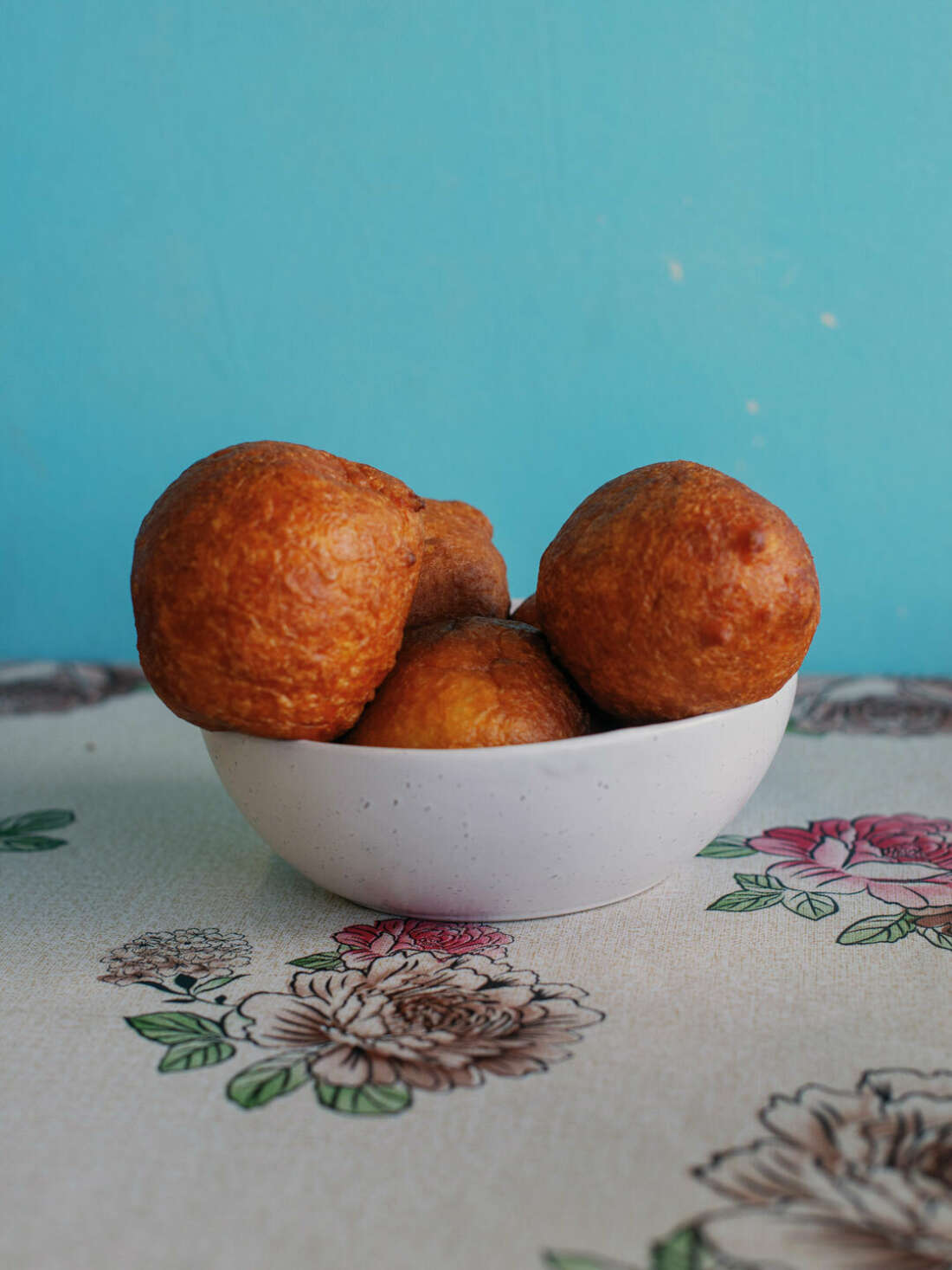
Fresh fish, a little meat and a variety of vegetables were seasoned and cooked in banana leaf packages in the backyard umu (earth oven). For the rest of the week it’s simple eating, like a pot of starchy tapioca served with some leftover fat from Sunday. This is food for sustenance and although nobody ever goes hungry, you might be peckish and “just have a cup of tea and go to sleep haha!” jokes Aunty Laia, “Or pick some fruit from the trees.”
That fluffy cloud of reminiscence billowed up and filled the restaurant, along with the sounds of high-pitched laughter and the rich smell of the food cooking in the kitchen. The menu at Pepe Lavinia is short but ticks all of the boxes, all the classics are here ready and waiting in the glass cabinets, and the prices are very reasonable. A crispy pig’s head looks out from behind the many glistening foil packages of lu. Each is only $10 and has been lovingly prepared by Lose who started the restaurant a year ago with her husband as she saw that Tongan food was not readily available in Auckland. “All the Pacific people, they love to come and eat here. It reminds them of the islands”, she tells me. “I don’t let anyone else cook here except for me, no one can make food like me so I have to be here seven days”. It shows. It’s delicious soul cooking, and my group is in heaven, making our way through our over-order with intermittent groans of delight – lu sipi and povi masima (salted beef), ota ika, taro, hopa, fried fish and feke (octopus) in coconut milk, all washed down with pineapple ‘otai. There’s a strong feeling of community here with carloads of Tongan people arriving; looking regal in their traditional clothes, straight from church to pick up food for tea. The owner gifts a keke (cake) to a cheeky little girl in her Sunday best.
“So what about the future of Tongan food?”, I ask my family. It turns out that there are a few ugly truths lingering beneath the rose-tinted surface. If the original Tongan diet was essentially plant-based, full of superfoods and accompanied by small quantities of animal protein, primarily shellfish and fish, today’s diet bears little resemblance. My aunties are quick to tell me that the majority of Tongans in and outside of Tonga are no longer regularly cooking and eating traditional food. Over-processed salt and fat-laden products like the iconic Pacific corned beef, instant noodles and cabin bread have replaced vegetables in island cuisine, and are much to blame for the widespread obesity that affects the entirety of the South Pacific, infamously known as the most obese nations in the world. American-style food and portion sizes are held in higher regard than the humble, healthy food that tradition offers. Younger generations have no idea how to make use of dried octopus or fermented coconut milk: traditional processes that are disappearing. Globalisation has served the health and cultural prosperity of the region well.
Fortunately, things appear to be turning around. Driven by passionate local food advocates such as Robert Oliver, a chef who wrote the award winning book on Polynesian food, Me’a Kai, and Papiloa Bloomfield Foliaki, an ex-politician who has been reconnecting people to the original pantry by teaching traditional cookery. Robert’s enthusiasm for island food is infectious. He began his campaign for local food after seeing that it just wasn’t being served by Pacific hospitality – cafes, restaurants and hotels were catering to Western tastes through burgers, chips and faux island cuisine. “Our food is not celebrated in the way that other foods are. And I though – why not?”, he says. “I don’t want to blame colonisation entirely because that’s very disempowering – we have to create the enthusiasm and the interest ourselves, to change the mindset and claim ownership of our food again. It not only impacts cultural preservation but the environment, farming, Pacific health, tourism, local economies and more”.
It’s clear that encouraging and showcasing local food is the way forward for the Pacific and always has been. Jonathan Gold wrote about it almost 20 years ago in a story on Hawaiian cooking titled ‘Real Hawaain’ where he discovered that “a proper luau, like a proper bouillabaisse or a proper paella, is an ultimate expression of community through food, an event less about spectacle or – immoderate feasting – or even the aspects of Hawaiian spirituality that underpin it – than about the hundred small parts that make up the splendid whole on this beautiful, soggy piece of the world.” Of course he was a step or two ahead in valorising the food of all corners of our planet, and so too have been our Hawaiian cousins who have valued and expanded locally grown produce and tradition since way back then. Robert tells me that the South Pacific has really begun to follow suit in these last years with renewed interest by chefs cooking local cuisine and a bunch of initiatives being launched, from micro-farming to televised local cooking competitions. In Tonga, there are numerous organic farming initiatives growing produce for surrounding communities as well as social media campaigns to support healthier eating. My partner Nick and I have recently had the pleasure of cooking for Princess Frederica Tuita, who expresses a deep enthusiasm for the future of our cuisine, as well as the health and sustainability that this promotes. “Traditional Tongan food is a lifestyle,” she explains to us, ”it is what brings the family together and was enjoyed everyday. The future of Tongan food is to act as a bridge to the past – it will lead Tongans back to the healthy way our ancestors ate and revive what Tongan food was always about; family”.
What started as an inquisitive trip to learn more about Tongan food has turned into a journey that has spanned months. From reconnecting with and eating more Tongan food, to acknowledging its at-risk nature (hampered by globalisation and reduced to ‘ethnic cooking’ as many non-occidental cuisines are), to learning about the people that are championing local food in forms both old and new, not just in the Pacific but beyond. It ended with plenty of optimism for what’s to come. Back at home, my Aunty Kelly wraps it up in her own poetic way.
“I would rather eat this food than go to dinner at Buckingham Palace! This is the taste of feasting on a Sunday. It represents family and memories of being home; a taste you have been craving for. We would all eat up and lie fully under the mango tree. Nothing is more satisfying than that.”
Postscript:
A year on and I feel much wealthier in knowledge and am confident in representing my culture. The simple act of asking my aunties out to eat at Pepe Lavinia has lead to us all spending more time talking about and eating Tongan food as a family. My partner Nick and I are proud to have integrated a taste of the pacific in our menu at Bar Celeste, and to have pacific islanders come in and be pleasantly surprised when seeing a familiar dish or flavour highlighted at our place, something that has been very important to me. Robert Oliver has a new show on screens across the islands, a reality cooking competition called “Pacific Island Food Revolution” with contestants from across the pacific cooking with local ingredients. I’ve heard that it has been picked up by some big networks overseas. I go back to Pepe Lavinia with my family and photographer Charles and his wife to take some shots – now I order for the table and enjoy telling our guests about the food, of which they find many links with their own Filipino cuisine… It feels for a moment that we are all back on our respective islands, the sun shining, smiling faces and the Otahuhu palm trees all adding to the warm mirage. It’s a special place, you should check it out.
By Emma Ogilvie. Photography: Charles Buenconsejo